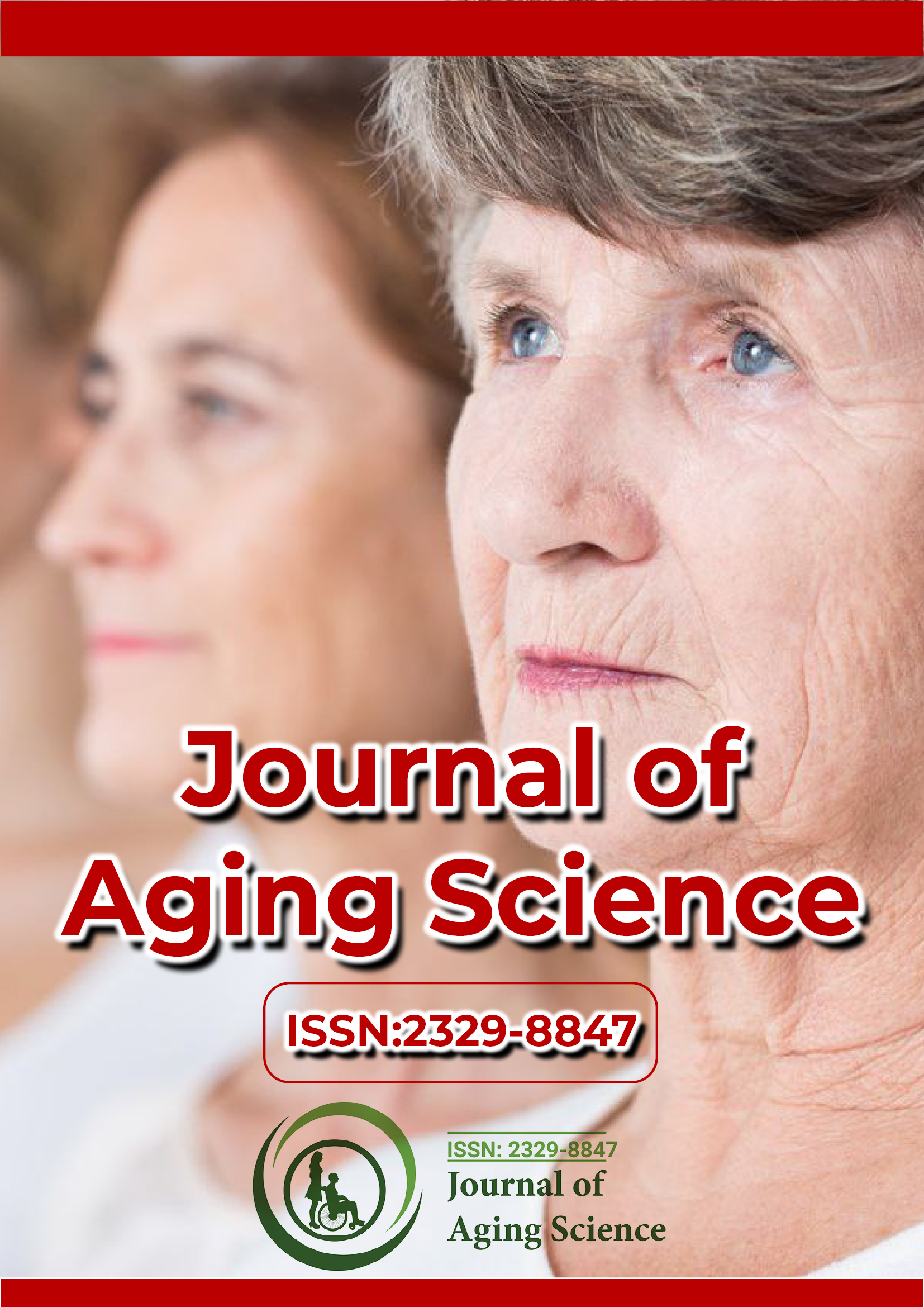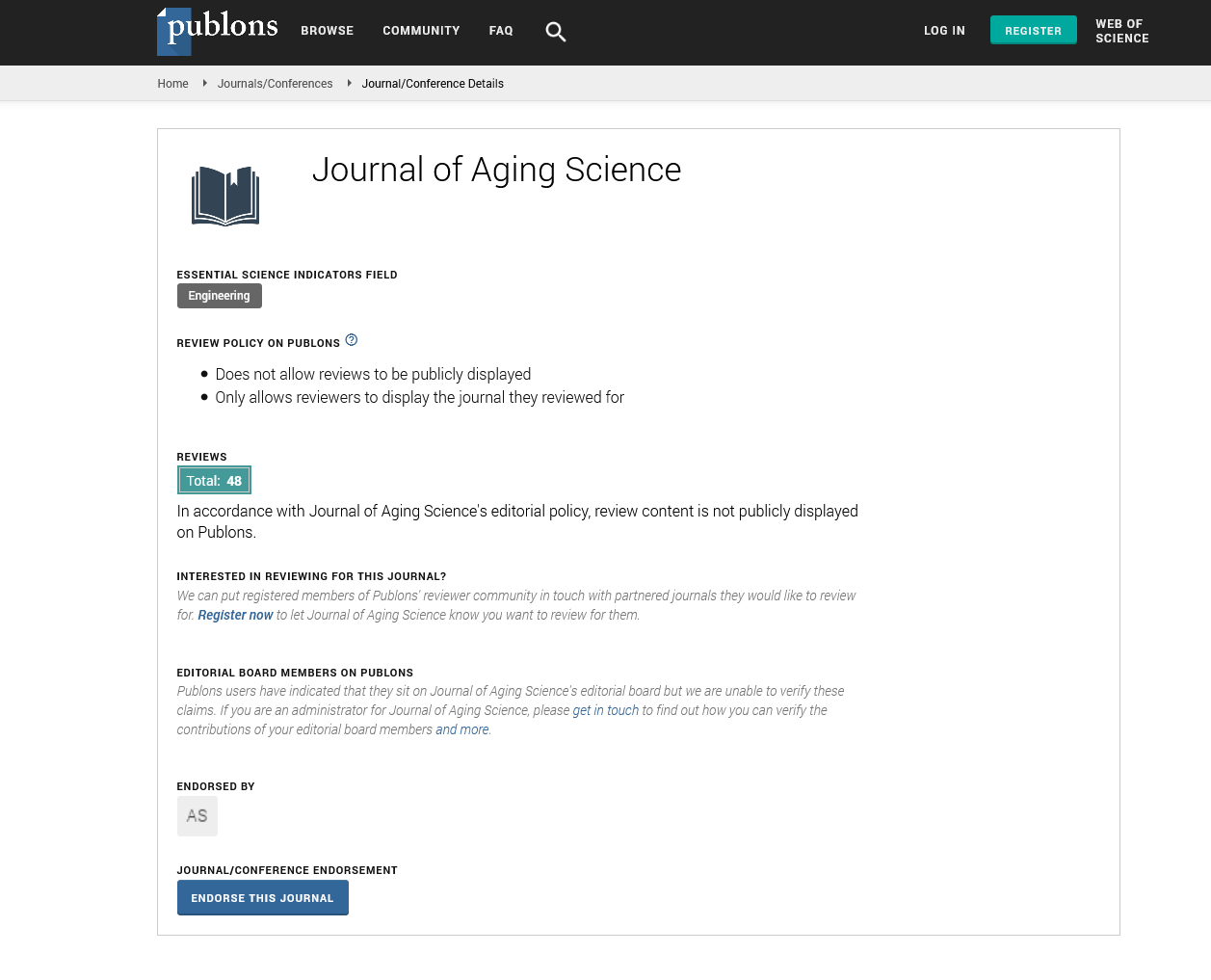Indexed In
- Open J Gate
- Academic Keys
- JournalTOCs
- ResearchBible
- RefSeek
- Hamdard University
- EBSCO A-Z
- OCLC- WorldCat
- Publons
- Geneva Foundation for Medical Education and Research
- Euro Pub
- Google Scholar
Useful Links
Share This Page
Journal Flyer

Open Access Journals
- Agri and Aquaculture
- Biochemistry
- Bioinformatics & Systems Biology
- Business & Management
- Chemistry
- Clinical Sciences
- Engineering
- Food & Nutrition
- General Science
- Genetics & Molecular Biology
- Immunology & Microbiology
- Medical Sciences
- Neuroscience & Psychology
- Nursing & Health Care
- Pharmaceutical Sciences
Perspective - (2025) Volume 13, Issue 2
Hormonal Changes in Aging: From Growth Hormone to Sex Steroids
Jennifer Witzel*Received: 28-Mar-2025, Manuscript No. JASC-25-28620; Editor assigned: 31-Mar-2025, Pre QC No. JASC-25-28620 (PQ); Reviewed: 07-Apr-2025, QC No. JASC-25-28620; Revised: 14-Apr-2025, Manuscript No. JASC-25-28620 (R); Published: 28-Apr-2025, DOI: 10.35248/2329-8847.25.13.406
Description
Aging is a complex biological process influenced by genetic, environmental and hormonal factors. Among these, hormonal changes plays an important role in the physiological alterations observed in older adults. As individuals age, the endocrine system undergoes significant modifications, leading to changes in metabolic processes, body composition, bone density, cognitive function and overall well-being. Two of the most affected hormonal systems are the Growth Hormone (GH) axis and the sex steroid hormones, both of which decline with age and contribute to age-related health concerns. Understanding these changes is necessary for developing therapeutic strategies to mitigate their adverse effects.
The growth hormone axis and aging
Growth Hormone (GH) is a key regulator of metabolism, growth and tissue repair. It is primarily secreted by the anterior pituitary gland and exerts its effects through insulin-like growth factor-1 (IGF-1), which is produced mainly by the liver in response to GH stimulation. GH secretion follows a pulsatile pattern, with the highest levels occurring during deep sleep and declining with age in a process known as somatopause.
By the age of 60, GH levels can decline by up to 75% compared to young adulthood. This reduction in GH and IGF-1 is associated with various age-related physiological changes, including:
Loss of muscle mass and strength: GH plays an important role in protein synthesis and muscle maintenance. Its decline contributes to sarcopenia, a condition characterized by the loss of skeletal muscle mass and function.
Increased fat accumulation: GH promotes lipolysis, the breakdown of fat, particularly in visceral adipose tissue. Reduced GH levels lead to increased fat deposition, particularly in the abdominal region, which is associated with metabolic disorders such as insulin resistance and cardiovascular diseases.
Reduced bone density: GH and IGF-1 are necessary for bone remodeling and calcium homeostasis. Their decline contributes to osteoporosis and an increased risk of fractures in older adults.
Cognitive decline: GH and IGF-1 have neuroprotective effects, influencing brain function, mood regulation and memory retention. Lower levels are associated with cognitive impairment and an increased risk of neurodegenerative diseases.
Estrogen and aging in women
Estrogen is the primary female sex hormone, playing a vital role in reproductive health, bone density, cardiovascular function and cognitive processes. During menopause, typically occurring between the ages of 45 and 55, ovarian estrogen production declines sharply, leading to estrogen deficiency. This transition, known as menopause, is associated with several health challenges:
Bone loss and osteoporosis: Estrogen inhibits bone resorption by osteoclasts. Its decline accelerates bone loss, increasing fracture risk.
Cardiovascular risk: Estrogen has protective effects on the cardiovascular system, including improving lipid profiles and reducing inflammation. Its reduction contributes to increased risks of hypertension, atherosclerosis and heart disease.
Cognitive and mood changes: Estrogen modulates neurotransmitter activity, influencing mood, memory and cognitive function. Postmenopausal women have a higher risk of cognitive decline and mood disorders such as depression and anxiety.
Metabolic changes: Estrogen deficiency is associated with increased fat accumulation, particularly visceral fat and a higher risk of metabolic syndrome.
Testosterone and aging in men
Testosterone, the primary male sex hormone, is necessary for muscle mass, bone density, libido and cognitive function. Unlike the abrupt hormonal decline seen in women during menopause, men experience a gradual decline in testosterone levels, often referred to as andropause or late-onset hypogonadism. This decline begins in the fourth or fifth decade of life and progresses at an average rate of 1-2% per year.
Key consequences of testosterone decline include:
Loss of muscle mass and strength: Testosterone plays an important role in muscle protein synthesis. Its reduction contributes to sarcopenia and reduced physical performance.
Reduced bone density: Testosterone supports bone mineralization. Lower levels increase osteoporosis risk in aging men.
Sexual dysfunction: Declining testosterone levels can lead to reduced libido, erectile dysfunction and fertility issues.
Cognitive and mood changes: Testosterone influences cognitive function, motivation and emotional well-being. Lower levels have been linked to depression, anxiety and cognitive decline.
Metabolic and cardiovascular effects: Testosterone affects fat distribution and insulin sensitivity. Its decline is associated with increased abdominal obesity and a higher risk of type 2 diabetes and cardiovascular disease.
Conclusion
Aging is inevitably accompanied by hormonal changes that impact multiple physiological systems. The decline in growth hormone and sex steroids contributes to reduce muscle mass, bone loss, metabolic disturbances and cognitive decline. While hormone replacement therapies offer potential benefits, they also pose risks, necessitating careful evaluation and personalized approaches. Ongoing research is focused on developing safer and more effective interventions to mitigate the adverse effects of hormonal aging, ultimately promoting healthier aging and improved quality of life.
Citation: Witzel J (2025). Hormonal Changes in Aging: From Growth Hormone to Sex Steroids. J Aging Sci. 13:405.
Copyright: © 2025 Witzel J. This is an open-access article distributed under the terms of the Creative Commons Attribution License, which permits unrestricted use, distribution and reproduction in any medium, provided the original author and source are credited.

